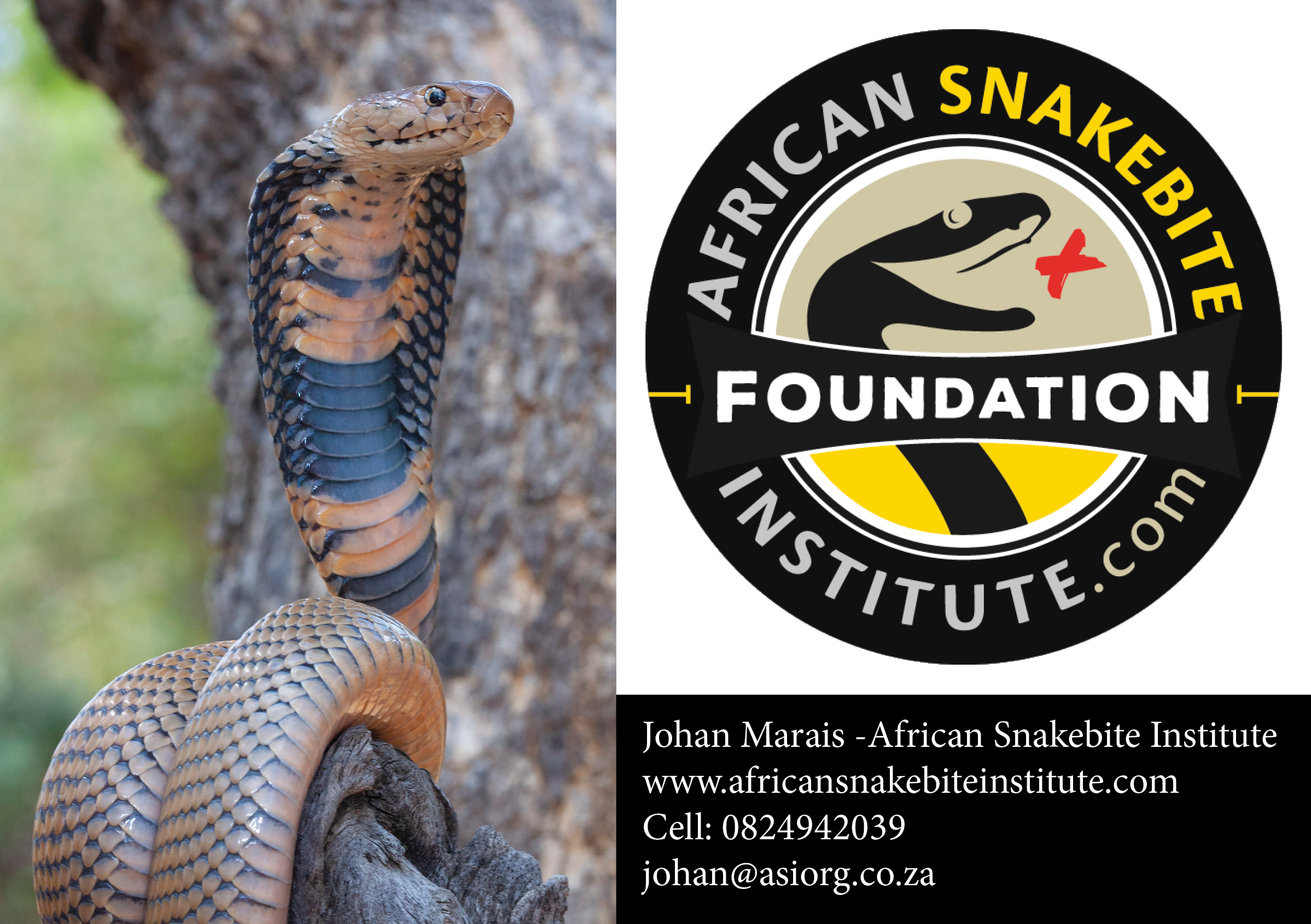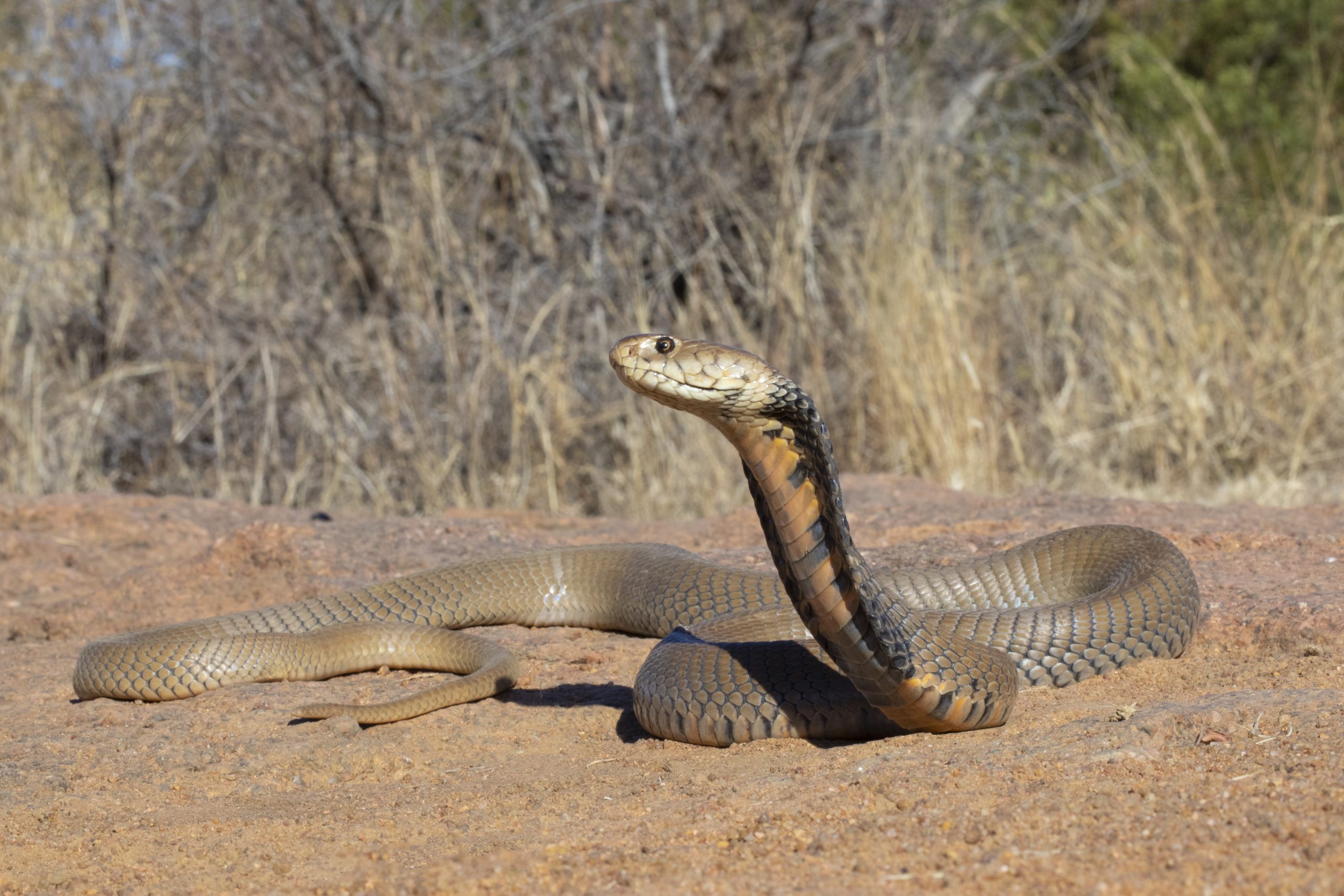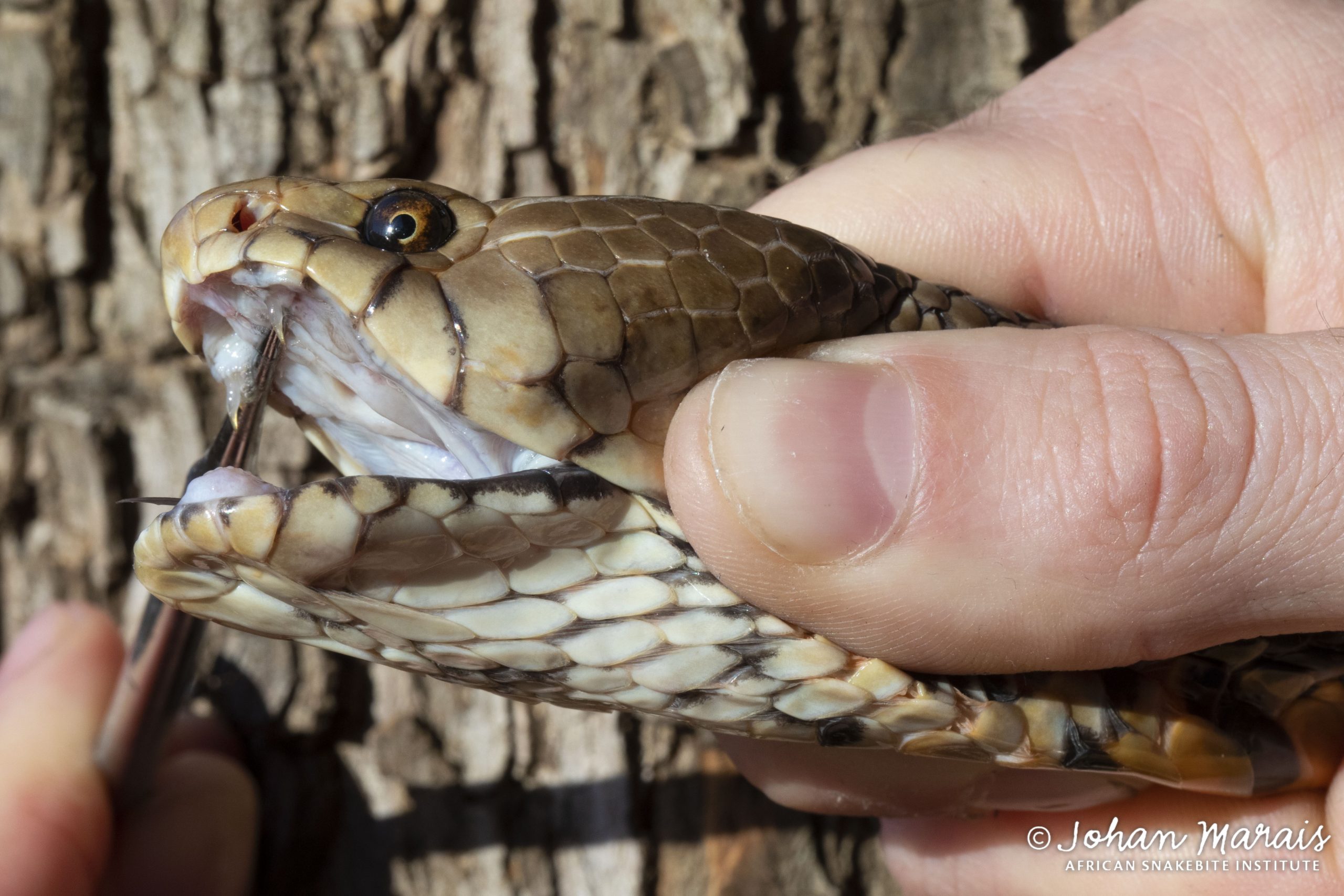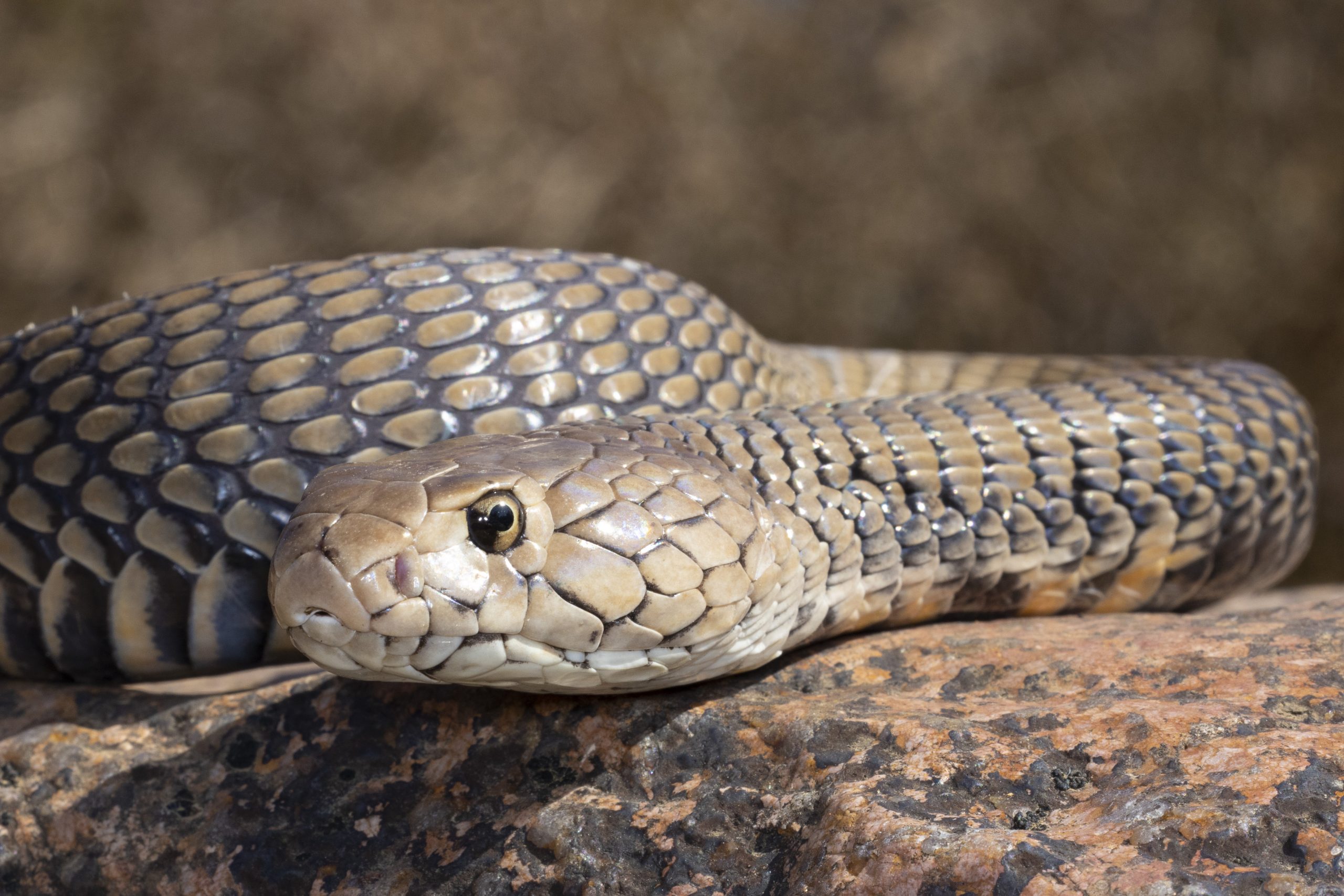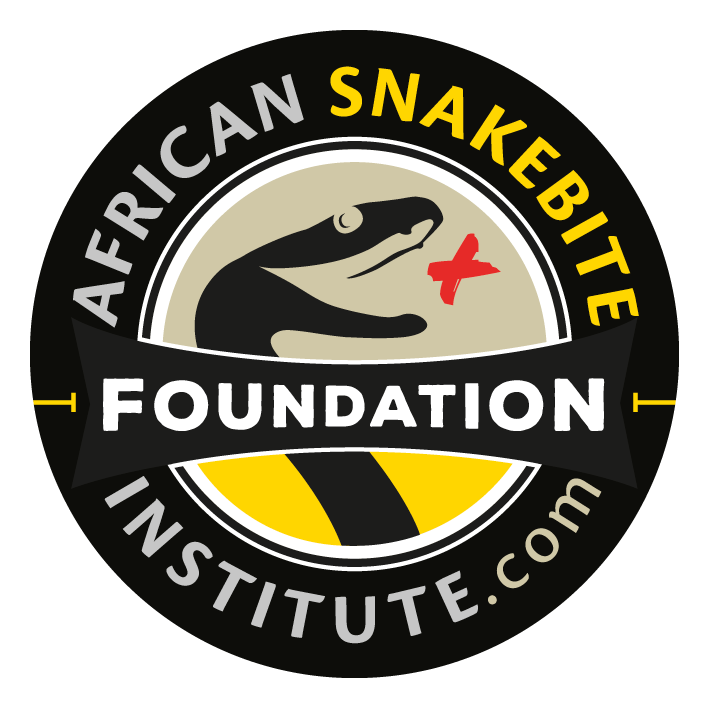It is often said that should you encounter a snake; the best course of action is to stand perfectly still. I will not be comfortable to stand half a meter from a hooded cobra or a Black Mamba with its head raised and the black inner lining of the mouth visible. My advice is to back off five paces immediately and once you are five meters away, the chance of getting bitten is close on zero. You will also be well out of range for spitting snakes as the maximum distance a spitting snake can eject its venom is less than 3 m.
While many people are bitten by Puff Adders, research has shown that most such bites happen at night when snakes on the move are accidentally trodden on. Bites from Puff Adders during the day are quite rare and although the venom of the Puff Adder is potently cytotoxic, resulting in severe pain, swelling and tissue damage, fatalities are rare.


